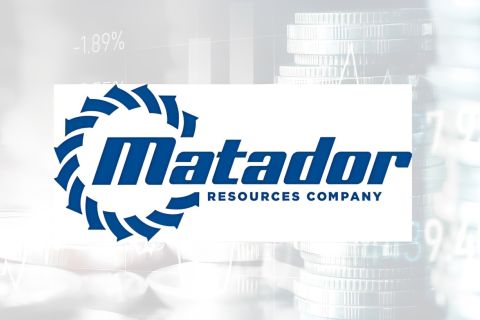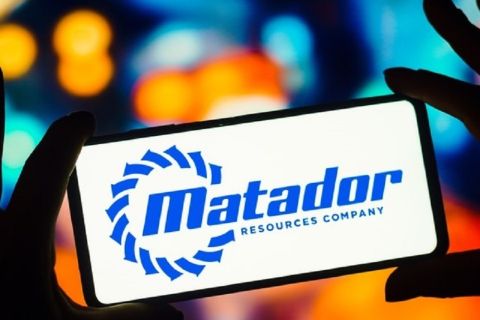Automation has had a dramatic effect upon a wide range of industries well beyond its original place of birth in the manufacturing sector. The automotive and aviation industries are two of those quoted most often as being at the forefront of the drive to successfully implement automation throughout all areas of operation, and they have achieved outstanding results so far. Anyone who gets behind the wheel of a car knows that the automotive industry has ticked all the boxes.
The upstream oil industry, however, has lagged behind, with the drilling sector in particular being most guilty of an apparent reluctance to take up the baton. While the downstream and midstream sectors have made impressive advances in terms of both safety and the optimization of operations in their gas plants, refineries, and pipelines, the drilling industry has fallen behind.
By its very definition automation is aimed at “dehumanizing” the production process of goods and services, lessening the need for human sensory and mental requirements. The use of control systems and information technologies reduces the need for humans to work in potentially hazardous areas, going far beyond the realm of mechanization that gives human operators machinery to assist them with the physical requirements of their job.
The drilling industry has always been a cautious adopter of new and emerging technologies, and many involved in it down the years would argue that that is a very necessary thing because of the costly, complicated, and potentially hazardous nature of drilling for oil and gas.
Safety factor
With the upstream industry progressing along its inevitable path toward fuller automation as part of a wider drive led by operators such as Shell, Statoil, BP, ExxonMobil, Apache, and Petrobras to change the way they operate in the field by implementing intelligent energy processes, integrated operations, “smart,” and remote solutions, the pace of drilling automation technology has now picked up dramatically.
Although automation will not replace individual human drillers, it should be seen as a way of helping them by dealing with the more mundane and repetitive tasks so they can focus on safety. This safety factor is an ethos that underlies the whole idea behind automation. Removing humans from dangerous areas reduces the risk of injuries and fatalities.
However, many will admit that it is tough to put a dollar value on this aspect, distasteful though that sounds.
Talking only about safety very rarely gets translated into the dollars of efficiency, which is much easier to quantify, and so the efficiency factor must always play its part in demonstrating where the benefits of automation also can be translated into dollars saved or earned as well as in terms of improving safety.
Holistic approach
After talking with several leading experts in the field to discuss the subject of drilling automation, the same word keeps cropping up – “holistic.”
Randy Hansen, drilling automation program manager, Drilling and Measurements, at Schlumberger, said, “We see automation as an enabler to deliver better efficiency – a way in which we can better and more safely deliver a well to a customer and truly apply our knowledge to the process.
“And when you can build a ‘well factory,’ this will change the business model. People are going to look at the drilling contractor, the algorithms – it will change things. It’s a more holistic approach.”
Mark Mitchell, Weatherford vice president, Drilling, said, “The key for us is process safety. It’s not simply operational safety; it’s taking what is typically a series of discrete activities and holistically looking at them in the context of what is happening with and around the well at any given time. This drive toward process safety is built around delivering well integrity and drilling reliability for our clients.”
Mitchell envisions a “large step change” in the next three to five years. “Industry efforts are converging, and we are beginning to see a clearer path forward,” he said.
Intelligent agents
In particular, Mitchell pointed to the need for increased use of intelligent agents to help the industry progress to the next level. “Automation around managed-pressure drilling is gaining more traction, and we see a time when we have intelligent agents acting within a closed-loop control system.
“The goal is to take the data that we collect, turn it into more useful information, and build intelligent agents (algorithms) that can connect the dots that many individuals simply cannot,” he said. “If we can use intelligent agents to help us connect the dots, then we don’t have to try to look at everything simultaneously; we can focus only on what is most important at any given time.”
Mitchell highlighted the downstream sector as having done “a great job” using intelligent agents in a hugely complex manufacturing process. “It is unrealistic to expect any one person to team to monitor every data-point involved in the refining process,” he said.
Hansen agreed that drilling automation was the next step change in drilling optimization. “For Schlumberger, some people talk about automating a machine, moving a pipe, and making the rig safer,” he said. “That’s a good objective in itself but not what Schlumberger is focusing on. Our expertise is in the subsurface. We want to pull back the human element from more repetitive tasks and do some fairly high-level optimization.
“Take our auto-ROP, where we can rate the drilling parameters in less than one second. Computers are able to optimize that string very quickly – a human cannot keep that level of focus. We are still developing the technology in ROP optimization and auto-steering modules, plus other algorithms we are developing and field-testing. But we want to automate these systems and detach the human from them.”
He added that Schlumberger was starting with drilling, but that the company also sees automation across well construction activities. “Tripping, cementing, casing – all are ripe for automation,” he said.
Mitchell also noted the different drivers behind the push for automation. “For land drilling, unconventionals are the driver for automation,” he explained. “I don’t think there’s going to be a whole lot of pushback regarding the ‘drilling factory.’ There’s already a lot of acceptance around the role of automation in shale, largely because of the high volumes of very similar wells. But it is one thing to automate particular equipment and processes. It’s quite another for people to accept and trust true closed-loop control systems.”
Industry standards
Another crucial area still being thrashed through by the industry at present is that of common standards and language. Industry initiatives such as the Society of Petroleum Engineers’ Drilling System Automation Technical Section (DSATS) program is attempting to establish various standards that could be used within the industry. Formed to accelerate the uptake of drilling systems automation by supporting initiatives that communicate the technology and promote lessons learned and best practices, the program has many participants from operators and contractors.
One of the main aims of DSATS is to recommend guidelines to allow open and secure communications between rig control systems, applicable surface and downhole measurements, and authorized third parties.
Mitchell agreed there is a strong need for open standards but that it is an area for operators and contractors that “starts to get a little difficult” when it comes to data sharing. But he praised efforts by companies such as Statoil in forging ahead in this area.
“It’s extremely important to keep talking about this in the various forums,” he said. “DSATS is continuing to draw more attention, and the industry’s discussion about automation is building on that. These industry initiatives are needed so we can develop a common language. After all, my idea of automation may be someone else’s idea of remote control.”
So what is driving Weatherford’s vision for its road map? “Initially it was all about drillability; then it became about efficiency,” Mitchell said. “These things build on each other. Now it’s about improving operational safety and then transitioning from operational safety to process safety – automation is the key to being able to do that.”
“Drilling is more uncertain than flying,” added Hansen. “It’s more difficult to manage from an automation standpoint. I would say the biggest challenge is the sheer uncertainty in drilling. Most wells are modeled – you have a model, not reality, so be prepared to deal with uncertainties.
“How long will it take us to get there? I think it will take some more time – but not too long,” he said.
Recommended Reading
Matador Stock Offering to Pay for New Permian A&D—Analyst
2024-03-26 - Matador Resources is offering more than 5 million shares of stock for proceeds of $347 million to pay for newly disclosed transactions in Texas and New Mexico.
CEO: Coterra ‘Deeply Curious’ on M&A Amid E&P Consolidation Wave
2024-02-26 - Coterra Energy has yet to get in on the large-scale M&A wave sweeping across the Lower 48—but CEO Tom Jorden said Coterra is keeping an eye on acquisition opportunities.
Matador Resources Announces Quarterly Cash Dividend
2024-04-18 - Matador Resources’ dividend is payable on June 7 to shareholders of record by May 17.
Matador Resources Declares Quarterly Dividend
2024-02-14 - Matador Resources will pay a $0.20 dividend on March 13 to shareholders of record by Feb. 23.
Hess Corp. Boosts Bakken Output, Drilling Ahead of Chevron Merger
2024-01-31 - Hess Corp. increased its drilling activity and output from the Bakken play of North Dakota during the fourth quarter, the E&P reported in its latest earnings.





